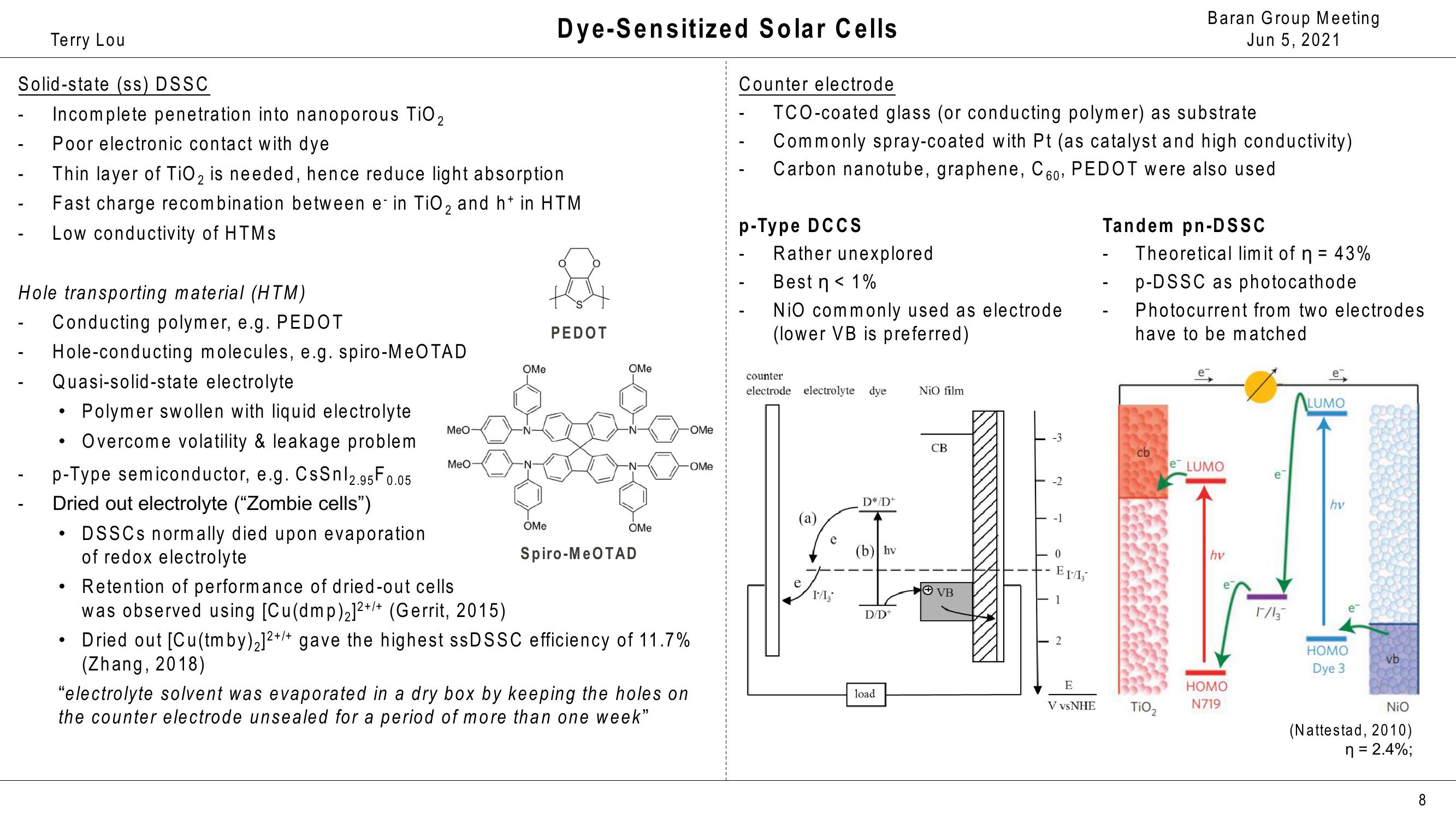Baran Group Meeting
Terry Lou
Solid-state (ss) DSSC
-
Incomplete penetration into nanoporous TiO2
Dye-Sensitized Solar Cells
-
Poor electronic contact with dye
-
Thin layer of TiO 2 is needed, hence reduce light absorption
-
Fast charge recombination between e in TiO 2 and h* in HTM
Low conductivity of HTMs
Hole transporting material (HTM)
-
-
Conducting polymer, e.g. PEDOT
Hole-conducting molecules, e.g. spiro-MeOTAD
Quasi-solid-state electrolyte
•
• Polymer swollen with liquid electrolyte
Overcome volatility & leakage problem
p-Type semiconductor, e.g. CsSnl 2.95 F0.05
Dried out electrolyte ("Zombie cells")
DSSCs normally died upon evaporation
of redox electrolyte
MeO
MeO
Retention of performance of dried-out cells
was observed using [Cu(dmp)2]2+/+ (Gerrit, 2015)
OMe
OMe
PEDOT
OMe
OMe
Spiro-MeOTAD
⚫ Dried out [Cu(tmby)2]2+/+ gave the highest ssDSSC efficiency of 11.7%
(Zhang, 2018)
"electrolyte solvent was evaporated in a dry box by keeping the holes on
the counter electrode unsealed for a period of more than one week"
-OMe
-OMe
Counter electrode
Baran Group Meeting
Jun 5, 2021
TCO-coated glass (or conducting polymer) as substrate
Commonly spray-coated with Pt (as catalyst and high conductivity)
Carbon nanotube, graphene, C 60, PEDOT were also used
p-Type DCCS
Best n < 1%
Rather unexplored
NiO commonly used as electrode
(lower VB is preferred)
counter
electrode electrolyte dye
D*/D*
(a)
(b) hv
NiO film
CB
-1
Tandem pn-DSSC
Theoretical limit of n = 43%
p-DSSC as photocathode
Photocurrent from two electrodes
have to be matched
e
cb
e LUMO
e
hv
0
EI/13
VB
1
I/I3*
D/D+
2
E
load
V vs NHE
TiO2
HOMO
N719
1/13
e
LUMO
hv
HOMO
Dye 3
vb
NiO
(Nattestad, 2010)
n = 2.4%;
8View entire presentation